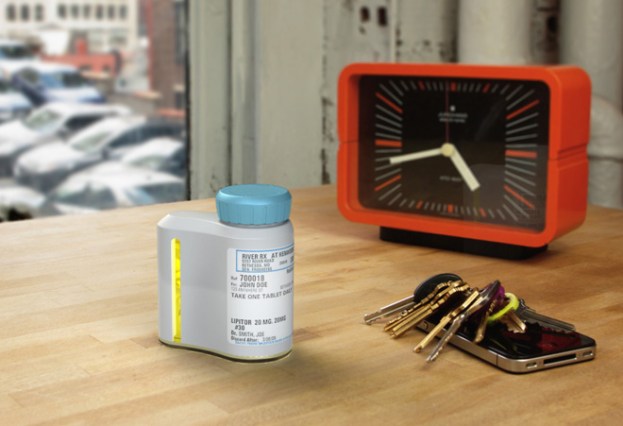
Do you sometimes have a hard time remembering to take your daily prescription medication at the right times? Or that it’s time to renew that prescription so that you don’t have to go without for a few days?
According to a report from Wired, there is a new pill bottle in the works from a company called AdhereTech, which will actually do the reminding for you. The bottle, whose design is still being worked on, is constructed using a Makerbot 3D printer. While that’s a cool, modern way to manufacture them, what’s really impressive is what the bottle can do.
Each bottle will have lights, speakers, a battery that can last up to 45 days – plenty of time for the average prescription – and, what’s more, they will have 3G and LTE connectivity. Tiny sensors inside the walls of the bottle can even measure how many pills are left.
The company will get prescription information supplied by each patient’s pharmacist, so it knows exactly how many pills a person should have, how frequently they should be taken, and whether or not a renewal is needed at the end.
Patients can cater the alerts to their liking. The bottle can either shoot a reminder text to a cell phone, light up or sound an alert when it’s time to take a pill, and, if it notices that you haven’t taken your meds in a reasonable amount of time, it will send a message to your doctor or relative.
The final prototypes of the bottles should be available by the end of next month, at which point they’ll be tested extensively by the University of Pennsylvania, Wake Forest University, and Walter Reed Army Medical Center. If the studies show that the bottles actually make in a difference in getting patients to take their meds at the proper time, the bottles will be introduced to the market, starting first with conditions like cancer, HIV, pulmonary hypertension, and rheumatoid arthritis.
Editors' Recommendations
- New 3D smartphone technology could change photography, experts say
- HTC’s coming back with a new smartphone, launching on June 16

